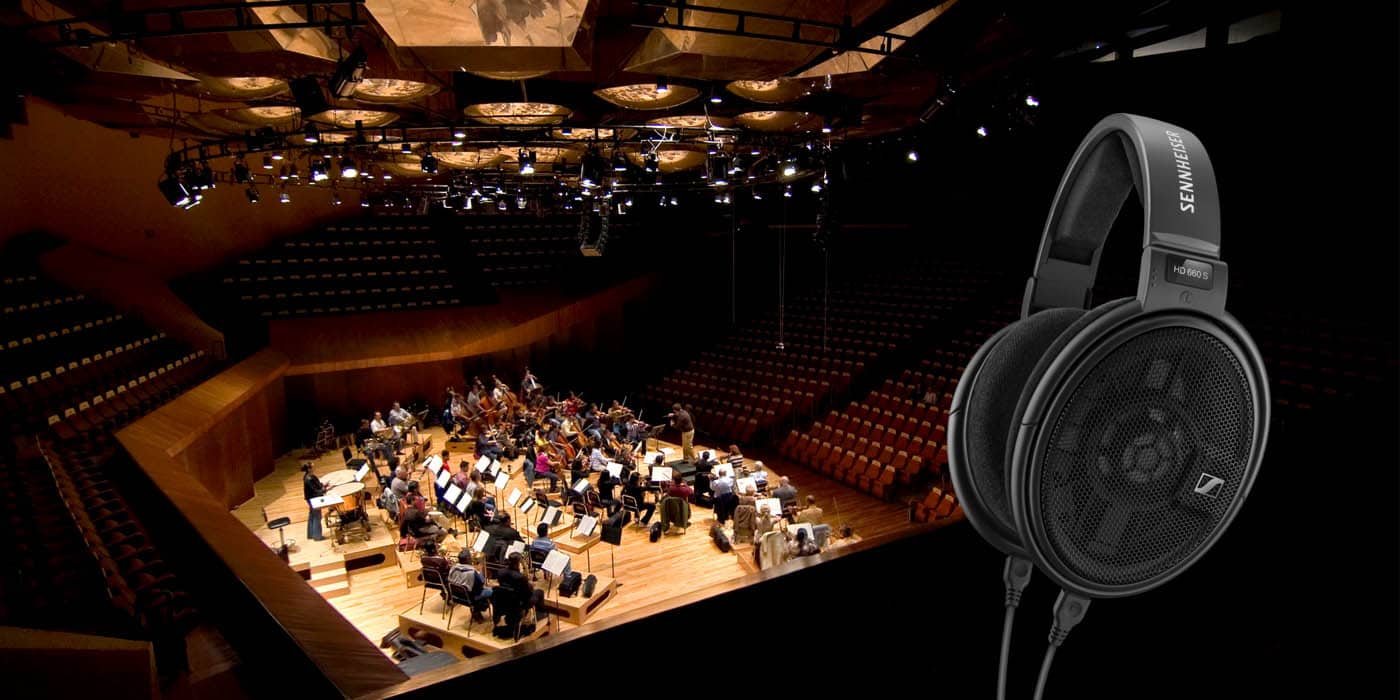Looking to immerse yourself in one of Beethoven’s legendary symphonies? Or how about some Brahm? Choosing the best headphones for classical music isn’t as simple as buying any expensive pair out there. Instead, we have to consider which headphones are best suited for the musical characteristics of the genre.
Different genres of music have different typical EQ curves. For example, dubstep sees an energy spike in the lower end of the frequency spectrum, because there is plenty of deep bass. Meanwhile, dance music has more activity in the treble frequency range (2,048 to 16,384 Hz) compared to most other genres (a result of synths and thrashing cymbals).
Now what about classical music?
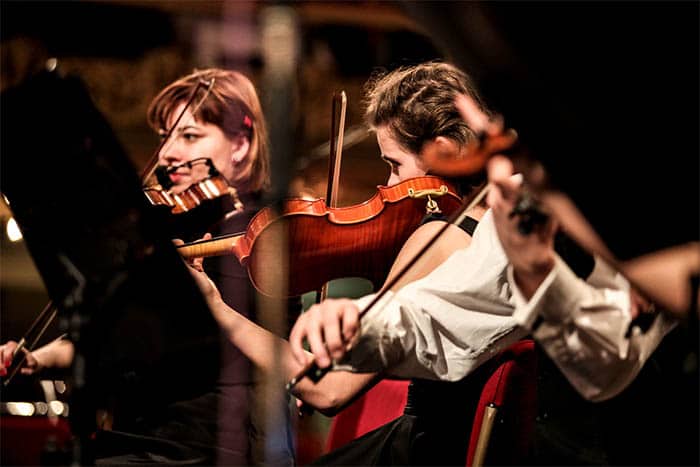
It’s All About That Mid-Range (250 Hz to 2 kHz)
Classical music is all about the mid-range. Sounds are produced by acoustic instruments and vocals, and there very little post-processing with boosted bass or treble that music producers of today’s genres almost always do.
Of course, there is also some deep bass coming from instruments like the orchestral bass drums or tuba.
But there is a great fall-off in the treble range. Even soprano singers hitting their highest notes will get to around 1000Hz, which is still well within the mid-range.
So what kind of headphones are best-suited to classical music?
We want headphones with a very neutral sound signature, that doesn’t overemphasize bass or treble.
This is quite problematic, as most headphones and speakers are either ‘bass-heavy’ or ‘bright’. Untrained ears are often wowed by thumping bass, or bright sounding speakers that tickle the senses when watching movies and playing games. And that means manufacturers deliberately color the sound of the headphones.
Buying Guide: What You Should Be Looking For
So that brings us to the three key factors that make a great pair of headphones for classical music: Open-back, neutral sound signature and comfortable to wear. Let’s take a closer look at each of these factors.
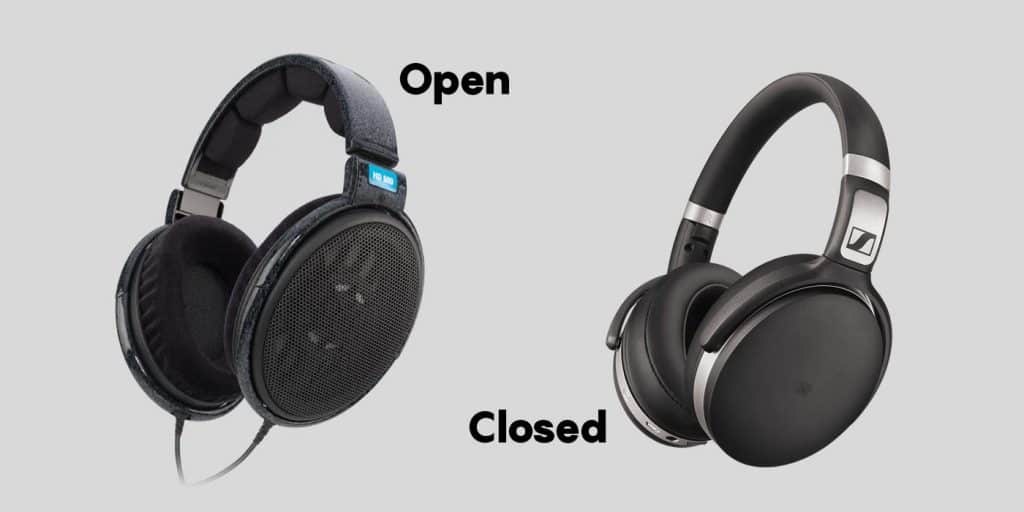
Open-Back
First, there are two types of headphones. Those with an open back and those with a closed back. For classical music, you ideally want open-back headphones.
Because they don’t have solid cups, open-back headphones let sound waves escape freely instead of having them being reflected and dampened within the cup. This makes sound reproduction more accurate and true to source. It also creates a wider soundstage and better sense of openness in the audio.
You can learn more about the differences between the two types of headphones by reading our article on open-back vs closed-back headphones.
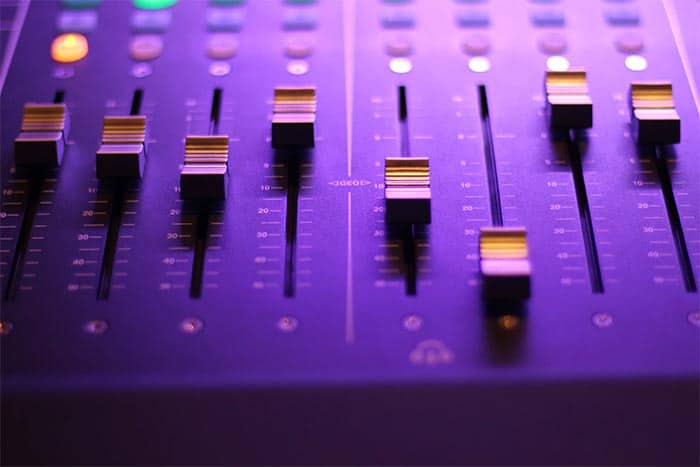
Neutral Sound Signature
As explained, classical music has a heavy emphasis on the mid-range. Sure, there’s some deep bass and you’ll hear the violins and flutes cross into the treble range. But we want to make sure that those extremes are present without drowning out the mid-range, where the majority of the orchestra sits.
Even cheap headphones will easily hit the lowest lows and highest highs produced by acoustic instruments. So the important thing is to look for those with a neutral (also known as ‘flat’) sound signature. The sound signature should not exaggerate low or high ends.
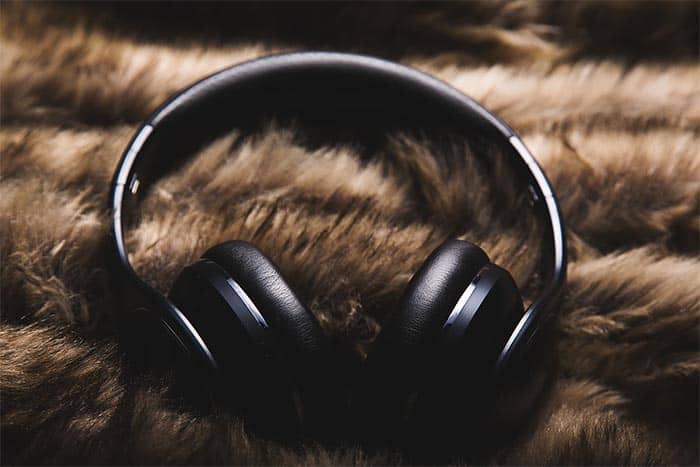
Comfortable To Wear
Anyone that has listened to classical music knows that a composition isn’t short. It’s actually quite the opposite. Most compositions are anywhere from 15 minutes (very short) to over 40 minutes.
Compare that to modern music where each song rarely lasts over five minutes.
You therefore want comfortable and breathable headphones so you can peacefully enjoy a full composition from start to finish.
Obviously, not every pair of headphones is comfortable for every person, but some are definitely more comfortable than others. In our list of recommendations, we’ll focus on headphones that have plenty of padding on both the ears and the headband.
Also, open-back headphones are by virtue preferable because of improved airflow that won’t result in things becoming clammy.
Best Headphones For Classical Music – Reviews
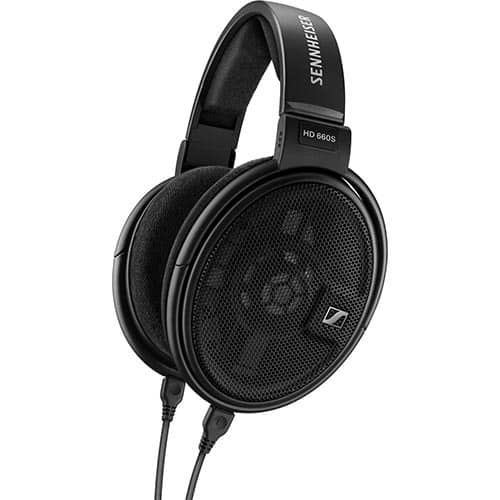
Best Overall: Sennheiser HD 660 S
Those familiar with Sennheiser headphones will recognize the HD 660 S as the successor of the Sennheiser HD 650. Fortunately, the HD 660 S does everything that the HD 650 did, but better. That’s saying a lot because the HD 650 was known as “The King” for years.
Sennheiser did a fantastic job to make sure the HD 660 S lived up to the expectations of audiophiles.
No frequency in the frequency range (10 to 41,000 Hz) really stands out over any other. And that makes it quite enjoyable for classical music. Most listeners can’t figure out if the headphones emphasize bass or treble, which is definitely a good thing for classical music.
These headphones can easily hit higher notes without excessive harshness. The bass is powerful, but it doesn’t “bump” or “throb.” It’s a very natural bass that you would expect if you were listening to the show live. Nothing sounds artificial.
Finally, the headphones are comfortable. Sennheiser have a great records when it comes to ergonomics. Keep in mind that they do require a short breaking-in period as they can be a bit tight at first. However, they do conform to your head after a while and you’ll eventually forget you’re even wearing headphones.
Positives
- Flat sound profile with crystal clear audio.
- The headphones are so comfortable you may forget you’re wearing them.
- No harshness at higher frequencies that can contribute to listening fatigue.
Negatives
- Slightly tight fit compared to other Sennheiser offerings.
Final Verdict
If you’re looking for a well-balanced pair of headphones at a decent price, then the Sennheiser HD 660 S are the headphones for you. The warm-neutral sound is mid-rangy and quite forward. Highs are bright without veering into harshness.
These our are recommended headphones for classical music. We’d also recommend picking up the older HD 650 if you can get them for less.
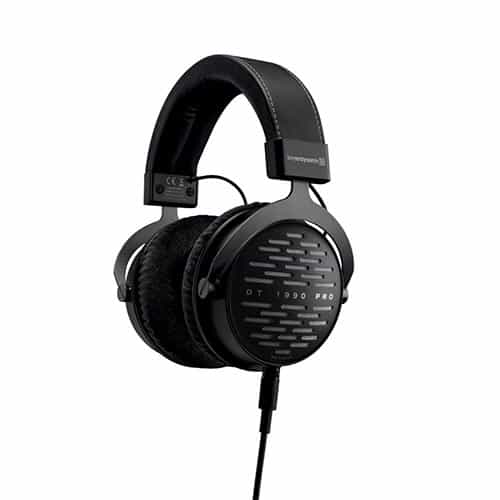
Runner Up: Beyerdynamic DT 1990 Pro
The second-best overall headphones for classical music are the Beyerdynamic DT 1990 Pro. They are an almost perfect combination of price, quality, and sound profile.
First, the price is not too bad on these. Sure, they’re expensive, but as audiophile headphones go, it’s nothing extraordinary. The fact they outperform headphones that cost twice as much represents great value for money.
The headphones lean towards bright, which brings the high-pitched woodwind and string instruments to life. While the brightness may be slightly bothersome when listening to radio pop music with boosted treble, they’re not the faintest bit fatiguing when it comes to classical music.
Possibly the neatest addition are the two pairs of earpads included with the headphones. Beyerdynamic came up with the idea of switching out earpads as a means to change the overall sound characteristics.
One pair has a ‘well-rounded’ sound while the other has an ‘analytic’ sound as they put it. The analytics earpads are great for professional studio usage where critical listening is important. But for classical music, you’ll want the slightly smoother audio that comes with the ‘well-rounded’ earpads.
The other features on the headphones are worth mentioning, too. Both a straight cable and coiled cable come with the headphones. Both those cables have balanced 3-pin XLR connector, which is the way to go in high-end setups.
Positives
- The emphasis on treble and mid-range makes it great for classical music.
- The quality at this price point is extremely good.
- Extra features (two cables, two pairs of earpads, and a hard carrying case) make it even better value.
- Excellent build quality, metal design with no plastic in sight.
Negatives
- The treble might be a bit much for those sensitive to treble.
Verdict
All in all, these are our second-favorite headphones for listening to classical music.
The DT 1990 did not earn the top spot because they just aren’t quite as smooth as the Sennheisers. The DT 1990 Pro are great for classical music (especially if you like the brighter sound profile) but can sound somewhat harsh in other genres. Don’t let that scare you; these are still excellent headphones.
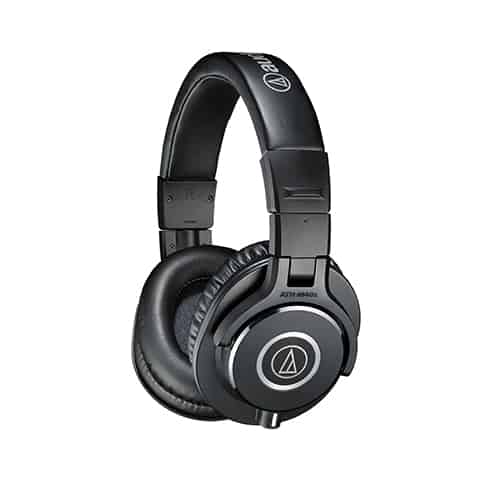
Budget Pick: Audio-Technica ATH-M40x
If you want quality headphones at an affordable price, then the Audio-Technica ATH-M40x headphones are the choice for you. It’s difficult to find quality headphones, especially for classical music, priced under $100. However, the ultra popular Audio Technica’s ATH-M series are just shy of $100 and an excellent choice for classical music.
The ATH-M series are the most popular closed-back headphones on the market today. They mark the beginning of ‘serious’ headphones, and the fact they’re closed back means they don’t leak sound and block out outside noise. That makes them great for use out and about in public, although it does result in a narrower soundstage and slightly less natural overall tone.
If you’re looking for closed-back headphones in this price range, there is simply no better alternative. These perform well in the midrange and are surprisingly well-balanced. That’s not very common in this price bracket.
Looking at the other models in the ATH-M series, we find the ATH-M40x hits the sweet spot for classical music.
The more expensive ATH-M50x has slightly bigger drivers that gives them slightly more powerful bass. However, for classical music, it’s difficult to justify the 50% price hike for something that will make very little difference.
We’d suggest avoiding the lower-end ATH-M30x, which has a big dropoff after ~5 kHz. Even though it has a listed frequency response of 15 Hz to 22 kHz, we found it much more difficult to pick out the super high notes compared to the ATH-M40x.
Positives
- Affordable price (under $100).
- Excellent mid-range performance and decent bass.
- Very comfortable to wear for extended periods of time.
- Closed-back design is great for use outside.
Negatives
- Closed-back design means sound lacks the openness open-back headphones can provide.
Final Verdict
It doesn’t really get better than these headphones at this price point. At this price bracket we aren’t in audiophile territory so open-back headphone options are very limited.
The neutral sound signature works especially well for classical music. Consider the ATH-M50x if you listen to a variety of genres and want more powerful bass.
They are also great if you are just looking for a pair of closed back headphones for public use. But for at-home listening, we’d suggest stretching your budget for the Beyerdynamic DT 880 (below) which gives you a wider openstage an orchestra deserves.
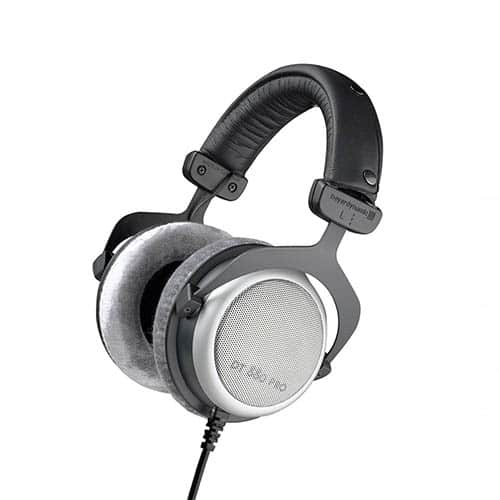
Budget Audiophile Pick: Beyerdynamic DT 880 Pro
Beyerdynamic have made it into this list for the second time, but this time we’re looking at a much more affordable pair of headphones.
The DT 880 is basically an inexpensive version of the DT 1990. One major difference that definitely impacts the sound is that these headphones are semi-open. This means some sound will escape and enter, but there is technically more sound reflection within the cups.
Despite that, the sound feels just as open and natural as most open-back headphones. The sound signature is very close to the DT 1990, although the mid-range is noticeably less forward. If you enjoy listening to Opera songs, you might feel the vocals are a bit flat compared to the DT 1990s, so keep that in mind.
The other place they’ve cut the corners is in the build quality. While it’s still top-notch, it doesn’t share the premium, all-metal design of the DT 1990.
One thing to keep in mind is that these headphones do require a headphone amp for optimal usage. Obviously, any serious pair of headphones should be paired with an amp, but people sometimes don’t assume a pair of cans costing ~$200 need them. Fortunately, you don’t need an extremely fancy amp or anything to get the most out of these power-hungry, low-sensitivity headphones.
Positives
- Significantly cheaper than Sennheiser HD 6XX and Beyerdynamic DT 1990, but in the same league.
- The semi-closed back design prevents some sound from entering.
- Flat sound profile that suits classical music.
Negatives
- Audio cable is attached to the cup and not detachable.
Final Verdict
These are an excellent pair of headphones for classical music. The bright and sibiliant Beyerdynamic sound works well for classical music. Sound-wise, they’re not far behind the DT 1990 Pro. However, you don’t get the premium feel and the hard-wired audio cable makes them slightly more cumbersome and difficult to pack.
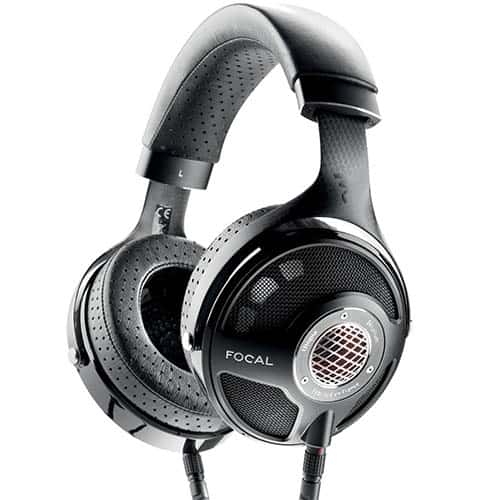
Premium Pick: Focal Utopia
The Focal Utopia earns a spot as the best audiophile headphones for classical music. Honestly, these headphones work great for any type of music. They’ve become well-known in audiophile circles as being Innerfidelity founder John Atkinson’s highest-rated pair of headphones.
They have a magical ability to bring out every instrument with the amount of energy that the orchestra’s conductor was looking for. If you’ve ever been to a live orchestra and experienced shivers sent down your spine, you can expect the same thing to happen here.
They’re a true engineering marvel, but the price alone will put most people off.
Positives
- Perfectly balanced tone.
- Wide sound stage that mimics a live performance.
- Very comfortable.
Negatives
- Very expensive.
- Not as aesthetically attractive as Focal’s other (and cheaper) offerings.
Final Thoughts
This article has hopefully provided you with everything you need to know about finding a pair of headphones that work well for classical music. All the options listed above will do Mozart, Bach and every other composer’s pieces justice.
Most audiophiles agree that Sennheiser and Beyerdynamic produce some of the best headphones on earth. Our favorite picks includes three headphones made by them. We’re also big fans of Grado, but feel the HD 660 and DT 1990 are the way to go.
Even if you don’t end up going with any of the headphones here, keep in mind what classical music is about. A flat-sound profile that keeps everything sounding natural is ideal. However, everyone has their personal tastes. Slightly warm or slightly bright characteristics may suit your ears more. Go out and test the headphones if you have the chance!

